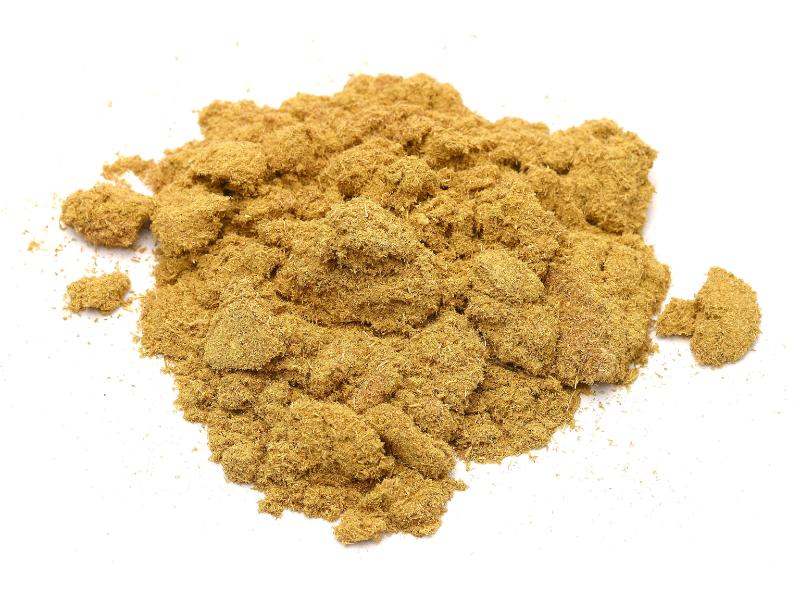Search in medicinals
Typhae Pollen
Typha pollen
蒲黄 〔蒲黃〕 pú huáng

Alternate English names: cattail pollen
Alternate Chinese names: 蒲厘花粉 pú lí huā fěn; 蒲棒花粉 pú bàng huā fěn; 蒲草黄 pú cǎo huáng; 蒲花 pú huā; 蒲草花 pú cǎo huā
Kingdom: Plant
Origin in PRC Pharmacopoeia: Typha angustifolia L.
Origin in unofficial sources: Typha angustifolia L.*; Typha angustata Bory et Chaub.; Typha latifolia L.; Typha davidiana Hand.-Mazz.; Typha minima Funk.; Typha orientalis Presl*
Use: Medicinal
Category: Blood-stanching agents / Stasis-transforming blood-stanching agents
Properties: Sweet and acrid; cool; nontoxic.✽
Channel entry: Liver and heart channels.
Actions and indications:
- Transforms stasis and stanches bleeding: All types of internal and external bleeding and stasis pain.
- Disinhibits urination and frees strangury: Strangury patterns, especially blood strangury.
Dosage and method: Oral: 3–10g in decoctions (wrap in a cloth bag); or take in powder form, drenched. Though often used raw, it is sometimes charred before use (for blood stanching). Also used topically.
Warnings: Contraindicated in pregnancy (the raw form induces uterine contractions). However, it may be used for postpartum bleeding.
Product description: This bright yellow pollen is light, is easily blown around, and floats on water. It sticks to the fingers but not together in lumps. Under a microscope it appears spheroid grains bearing fine hairs.
Quality: Clean, lustrous, bright yellow pollen is the best.
Production area: Zhèjiāng, Jiāngsū, Shāndōng, ānhuī.
Etymology: The name pú huáng 蒲黄), literally cattail yellow,
reflects the color of this agent.
See: Xiāng pú (香蒲 Typhae Herba, typha)
Back to search result Previous Next